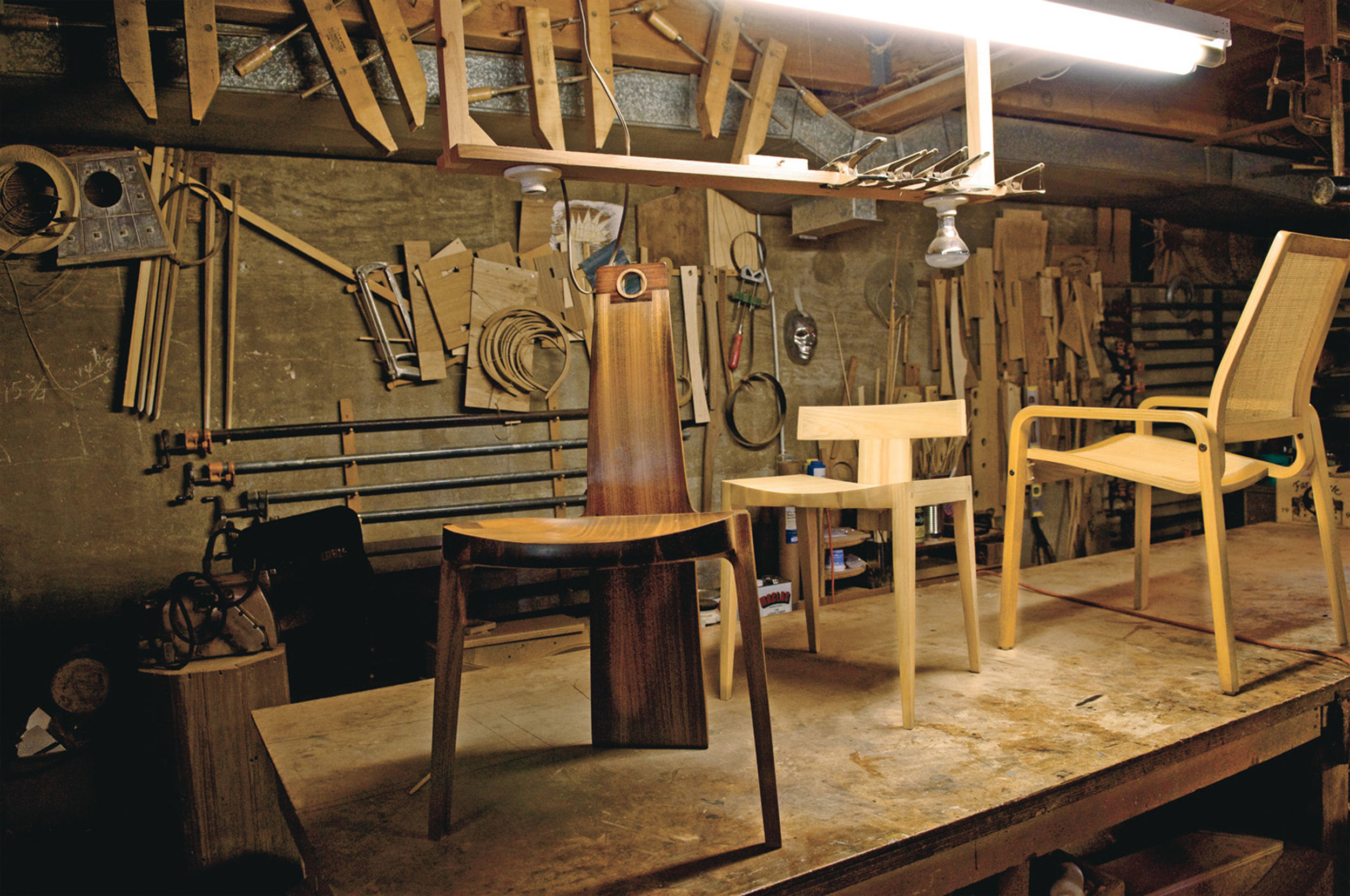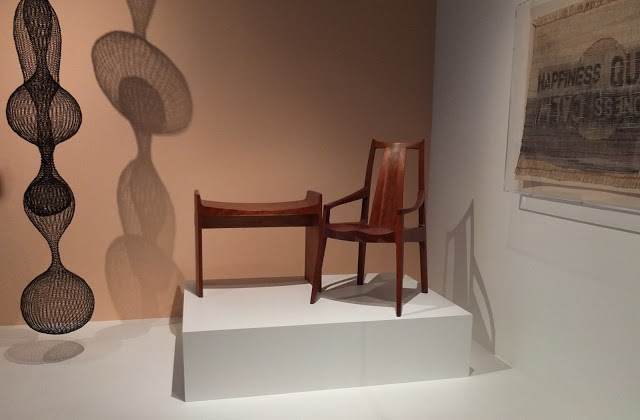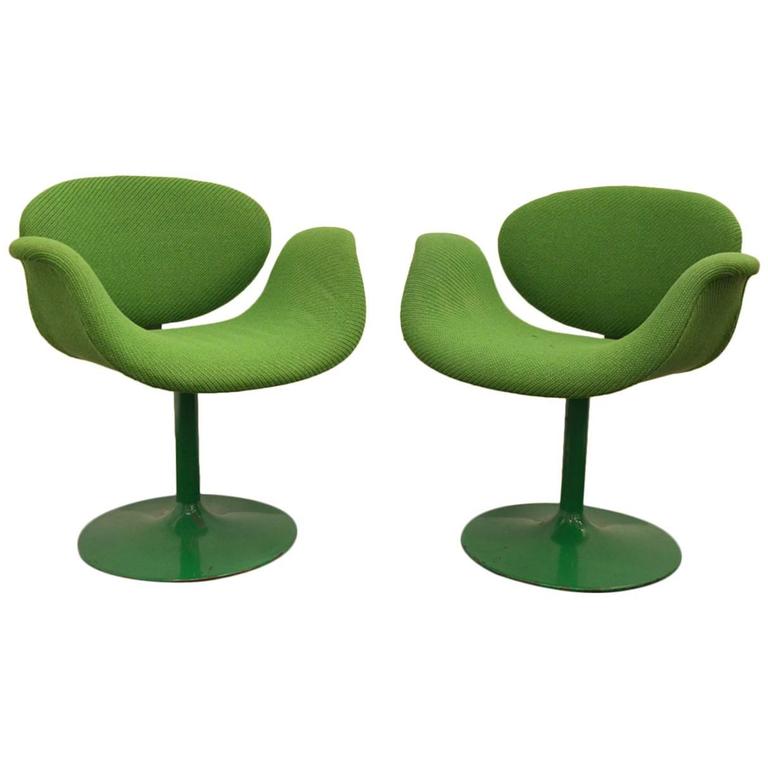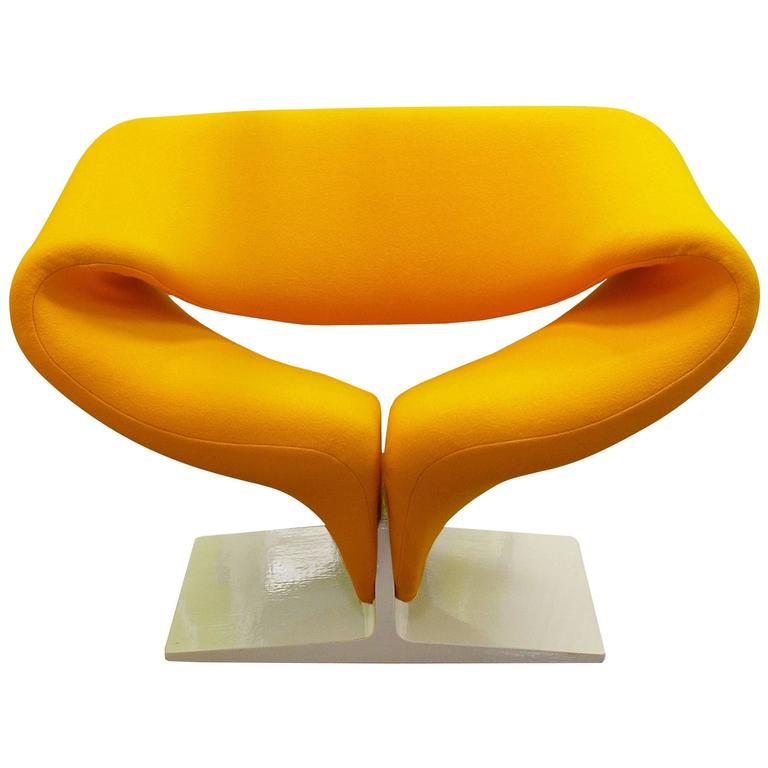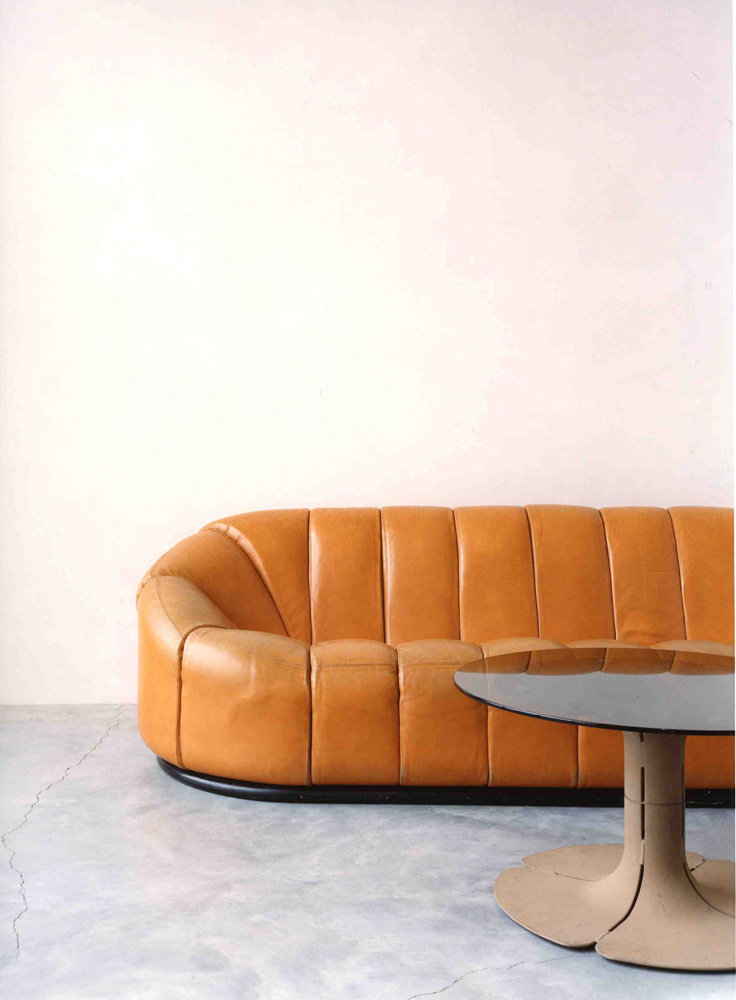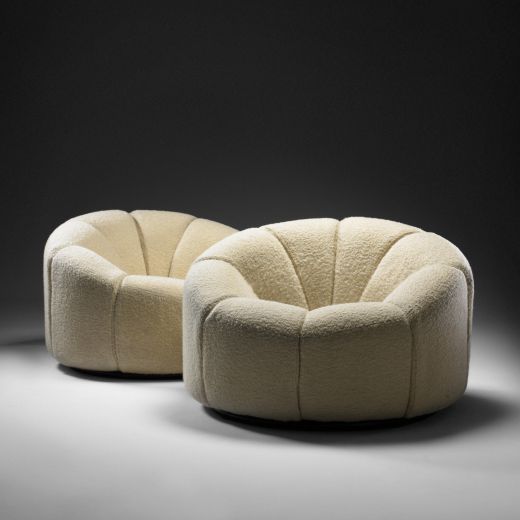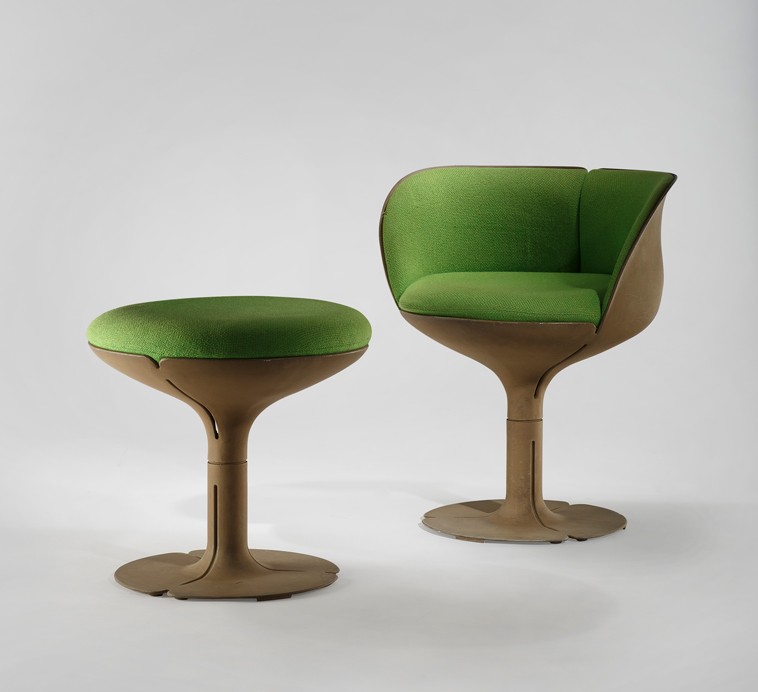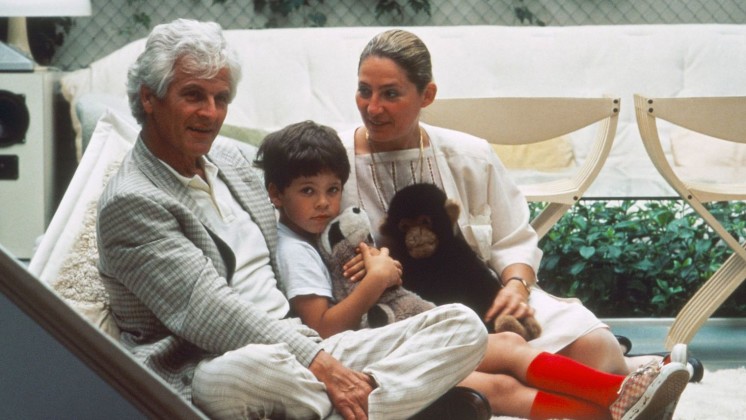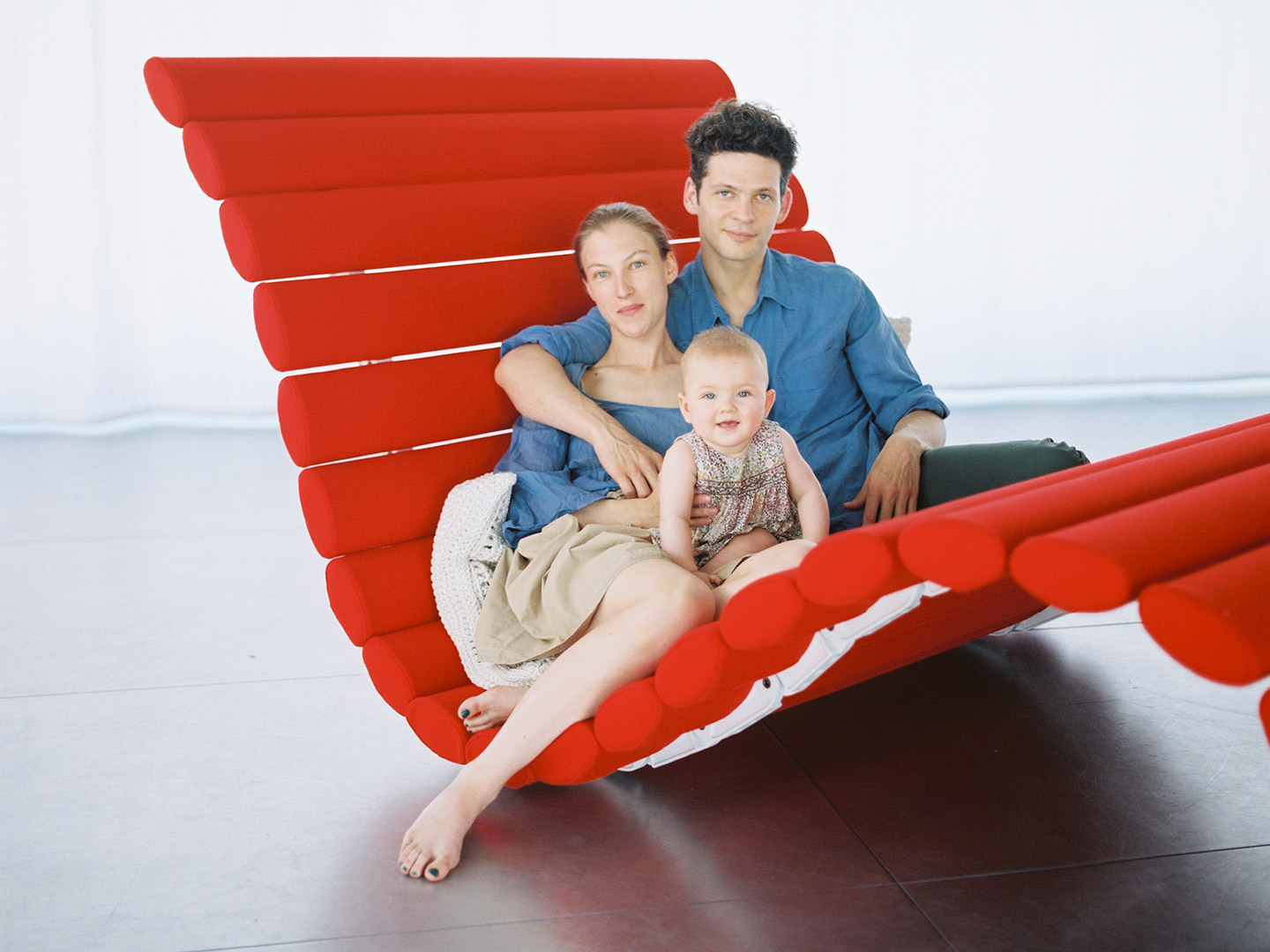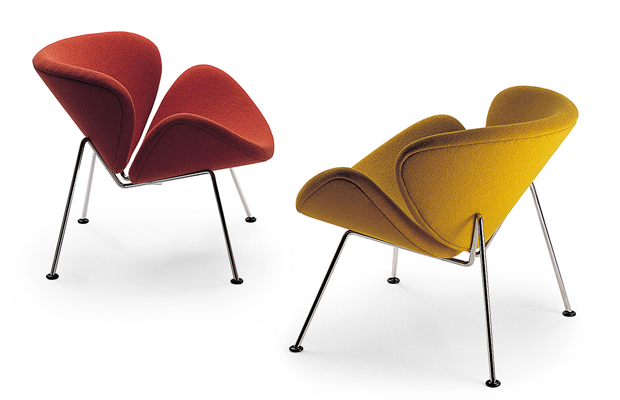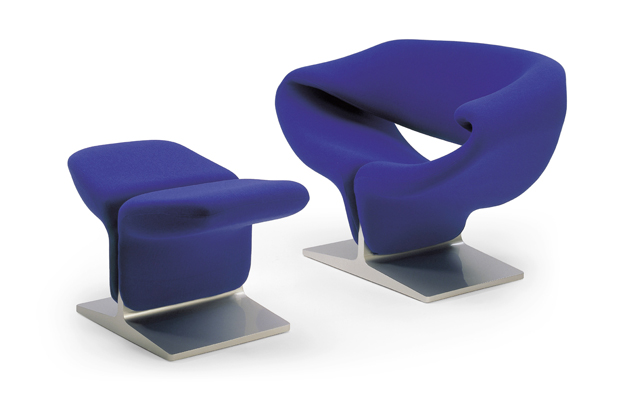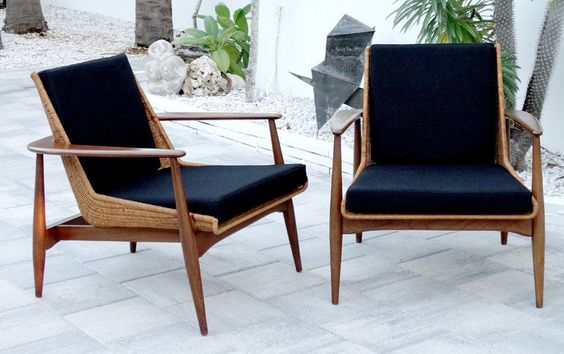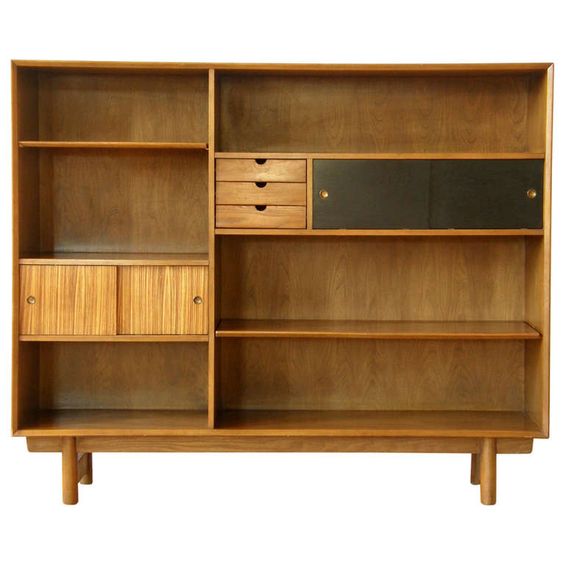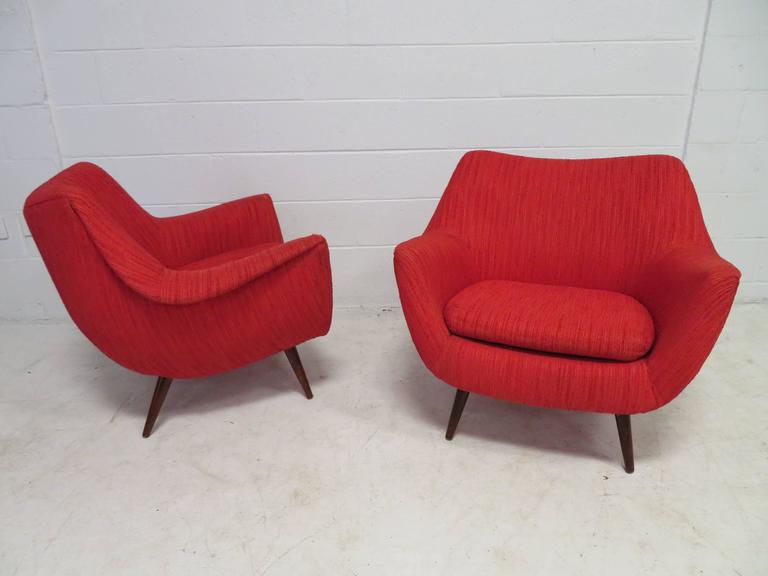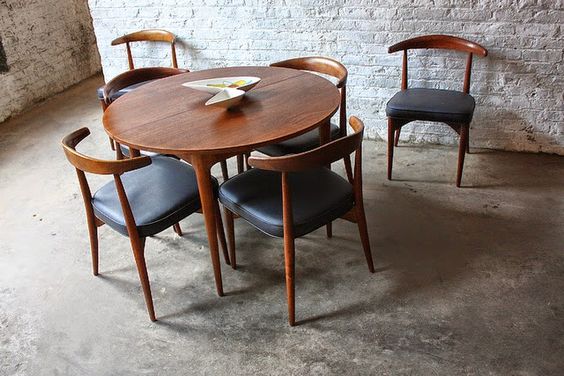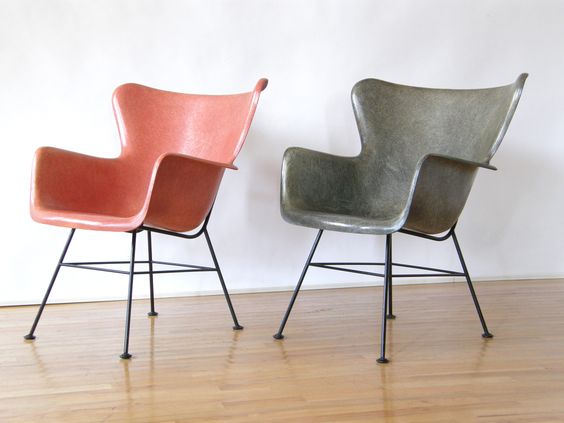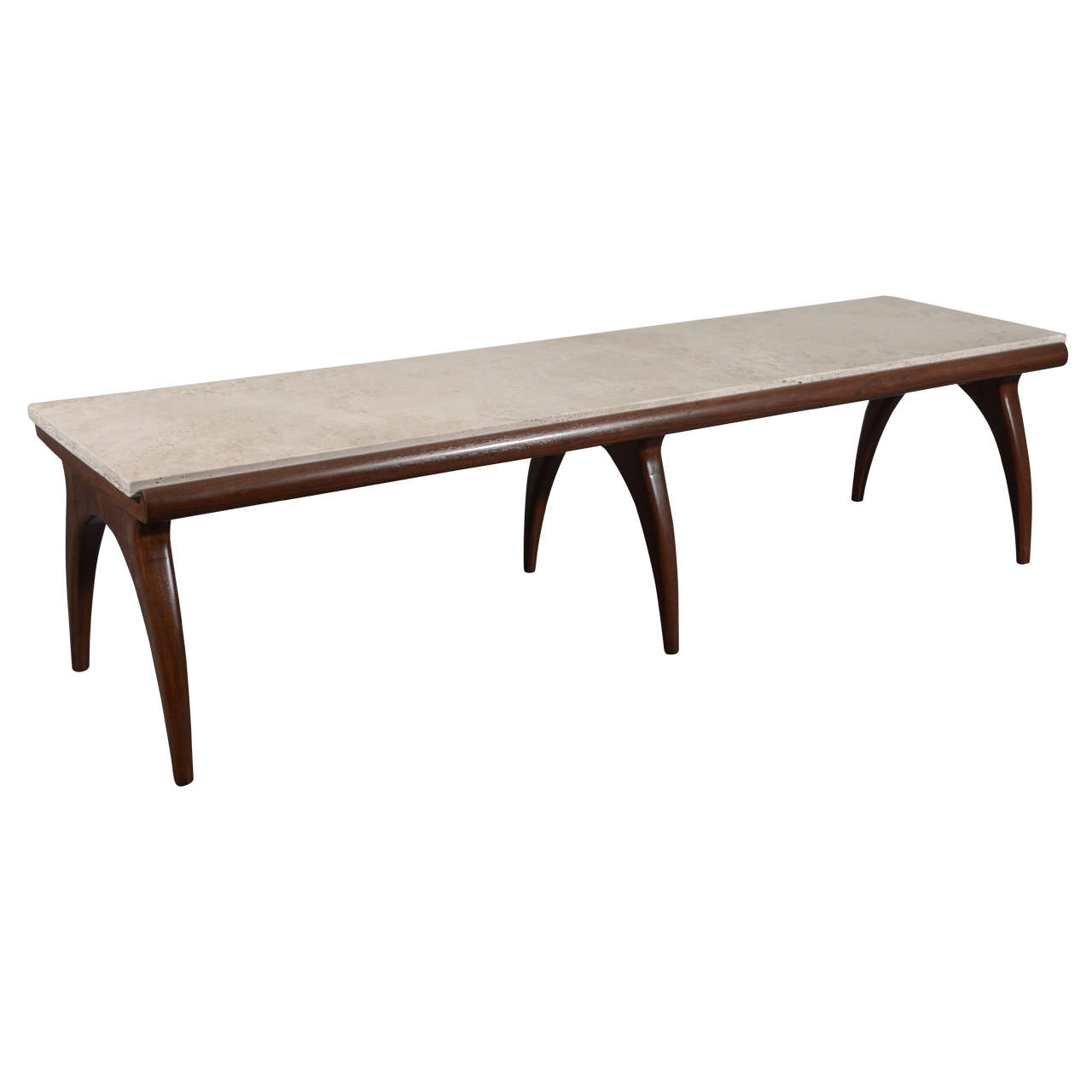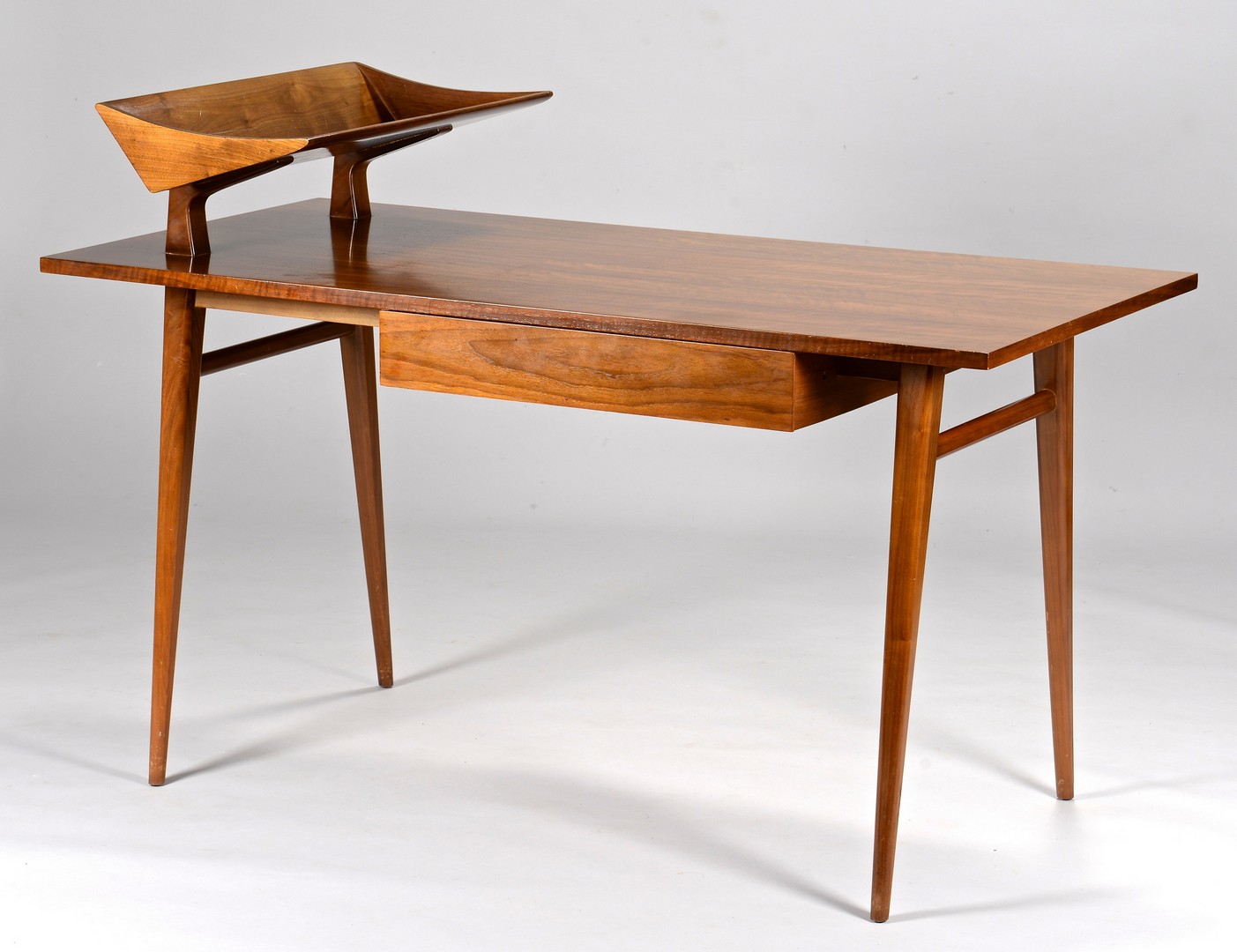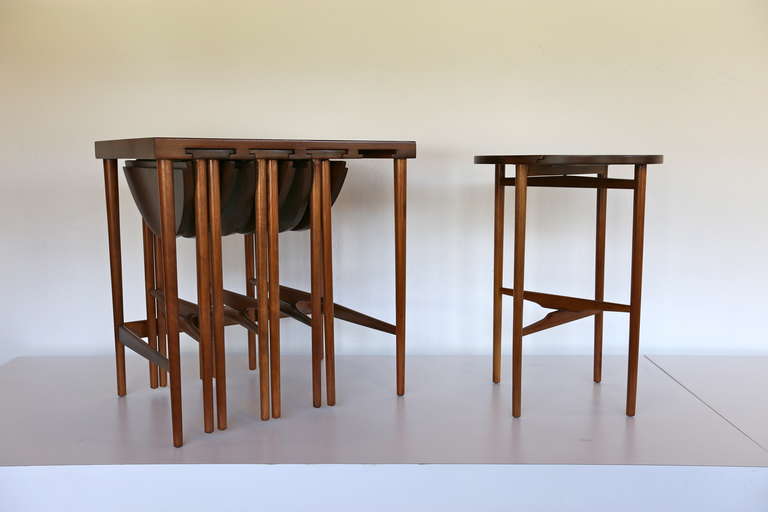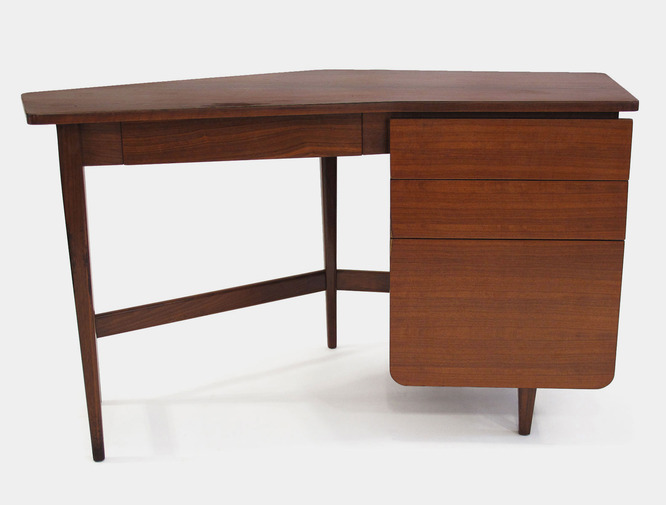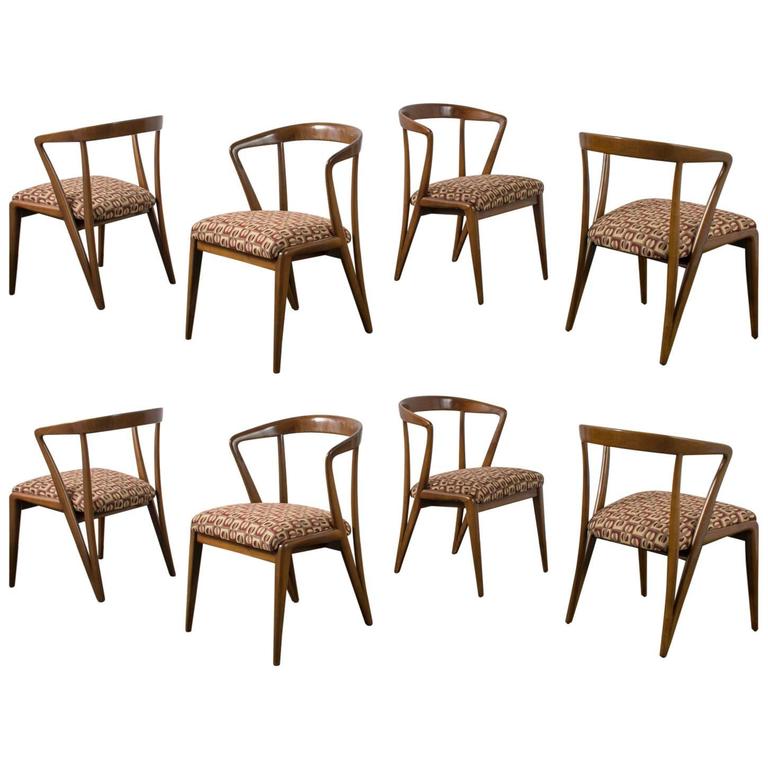We've come across these Mid-Century Modern dressers by John Kapel for Glenn of California several times since we started collecting and selling vintage Mid-Century furniture, and every time we are so attracted to this set.
John Kapel for Glenn of California
John Kapel designed this line for Glenn of California in the 1960's. It also includes a taller dresser, an armoire, more night stands, and a headboard. These pieces are walnut with carved handles and black accents. They are modern, minimalist, and elegant. They are beautiful, but are also practical with details such as a magazine holder inside the night stands and a mirrored cabinet door inside the armoire. They were designed over 60 years ago, yet work perfectly in today's interior design.
Early Exposure to Design
John Kapel (born 1922) graduated from the Cranbook Academy of Art in Michigan, where other well known Mid-Century furniture designers also studied, such as Harry Bertoia, Charles and Ray Eames, and Eero Saarinen. Kapel trained briefly in Yugoslavia and worked as a general designer for George Nelson & Associates in New York for a few years before he made his move to California.
Left: John Kapel at his home in Woodside, CA. / Photo: C-Home.com. | Right: Walnut and leather armchair designed by John Kapel in 1958. / Photo: Pinterest
Studio Craft vs. Popular Design
Like his good friend, Sam Maloof, whose designs we also admire, John Kapel is considered to be a studio craftsman. He is a skilled woodworker and metalsmith and has created many of one-of-a-kind pieces in his basement workshop. He also built prototypes to present to large manufacturers and developed a partnership with Glenn of California that lasted more than 20 years.
Chair prototypes in John Kapel's workshop. / Photo: C-Home.com
A Craftsman's Home
It was unusual for Mid-Century designers to focus on both unique studio pieces and also design for large manufacturers, but John Kapel is practical and wanted to be able to afford a nice home. In 1959, he built his dream home with the help of architect, Jerry Weiss, in Woodside, California. His home is a wonderful example of his craftsmanship and attention to detail. Not only is it full of furniture that he built himself, but he also created many of the lamps and sculptures.
“My fellow craftsmen sure thought I was tainted. They thought of me as a sell-out. I didn’t care. I wanted to have a nice house and designing for a manufacturer allowed me to do that.”
Left: a work space in Kapel's home / Photo: LATimes.com | Middle: the exterior of John Kapel's home in Woodside / Photo: C-Home.com | Right: a cantilevered fireplace that divides the living room and entrance to the Kapels' home. The sculpture is also by Kapel. / Photo: C-Home.com
One-of-a-Kind Furniture and Art
We did come across a beautiful vintage rocking chair by Sam Maloof several years ago, but have not come across any of John Kapel's studio craft pieces. I am glad he also designed for large manufacturers, so that more design aficionados can enjoy his work.
John Kapel children's furniture on display at the Oakland Museum of California / Photo Credit: Esoteric Survey
Right: 'Bell Tower Wood Assemblage Sculpture by John Kapel / Photo:1stdibs.com | Middle: 'Mogul' in stacked laminate particle board by John Kapel / Photo: 1stdibs.com | Right: 'Counterpoint' by John Kapel / Photo: Reform Gallery/1stdibs.com
Bibliography: Leslie WIlliamson, "Handcrafted Modern: At Home with Mid-Century Designers", Rizzoli, NY, 2010







